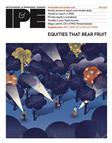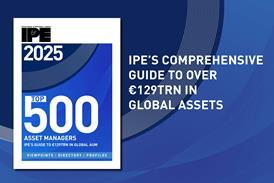Balancing performance and risk lies at the heart of all investment. Over the last 18 months, the need to be aware of the specific risks involved has become more pressing for pension funds. However, far from being a constraint on managers, a clearly defined risk profile should actually set a manager free to enhance performance.
But is it wise for risk and performance measurement to be integrated within portfolios, or treated as two separate areas? Some in the pension fund industry see an advantage in bringing the two tasks closer together.
“In order to get the volatility of returns you need to know what the returns are,” says Peter Warrington, executive direction of performance measurement specialists the WM Company, based in the UK. “We at WM are now including it as an integral part of our performance measurement. We think clients should be looking at this.”
Warrington says his firm has found that more people are asking for information on the risks they are exposed to. This is in large part a result of the Myners report, he says. Myners raised it as one of his 10 points, and it is now part of Department of Trade and Industry guidelines.
Risk measurement, he says, has been an item on the agenda of trustee meetings since then. If this year’s review of the Myners report shows that these guidelines are not being adhered to, there will be legislation put in their place.
The WM Company has had various risk products on offer for four years now. But the interest in these products has increased dramatically in the last 12 months, says Warrington.
Sally Bridgeland, who runs quantitative investment research at Hewitt Bacon & Woodrow agrees that linking performance and risk measurement is becoming more popular. “The way the industry is going is definitely to integrate the two,” she says. At the fund management level, the trade-off between risk and returns are looked at in an integrated way.
Traditionally, performance measurement has been driven by clients as a standard part of client reporting, whereas risk management has tended to be almost a compliance function, with in-house ‘risk police’ making checks.
“Increasingly fund managers have realised that if their risk controls get over the top, you can overly constrain the fund manager’s freedom,” says Bridgeland. If a fund manager puts together a portfolio and gets reprimanded for breaching a risk control, then a situation develops where the manager will take cautious positions in future, she says.
“Most managers are very close to their benchmark which in turn means their clients get very dissatisfied,” she says. “They’re paying active fees but not really getting active performance.”
To avoid this scenario, it is vital to make sure that risk controls are focussing on the right things. “That will only happen in a fund management house if those two things are integrated,” she says.
Ireland’s newly-formed National Pensions Reserve Fund only put its mandates out to tender last year, and therefore only has a couple of months’ performance under its belt so far. But already, it has found managers have been well under their risk budgets, says Deborah Reidy in Dublin.
Defining the level and type of risk a portfolio is to take is important. Reidy is head of investment manager selection at the National Treasury Management Agency, which manages the NRPF. She agrees one could argue that an obsession with risk could lead to underperformance. “We want managers to make full use of their risk budget,” she says. “If they don’t use it, we’ll take it away.”
After searching for risk and performance management systems, the NTMA chose two different providers. US analytics specialist Wilshire is providing three different products for the NTMA – ‘Atlas’ for equities, ‘Axiom’ for fixed income investments and ‘Spectrum’ which merges the data from the other two.
The products receive daily downloads of information such as prices, fundamental data and risk characteristics. Factor returns are then computed for performance attribution. Then the data is converted to risk scores using various co-variant methodologies.
For performance measurement, the mandate was given to performance analysis firm StatPro. This system offers performance measurement and attribution systems at the stock level on a daily transaction basis.
But while the performance and risk systems are technically separate, Reidy says risks and performance have to be seen together. “You need to look at it in a couple of dimensions,” she says. Risk and performance are looked at separately, but they are also looked at together, she says. “We were very specific when we looked for managers regarding the tracking error profile.”
Also, the commissioners of the fund require the NTMA to monitor risk on a daily basis. Reidy says the agency will be looking at the risk/reward figures in more detail when the fund has two years’ performance, as part of the manager evaluation.
With any investment portfolio, it is always necessary to know the information ratio, says Peter Eerdmans, senior research analyst at Watson Wyatt. The information ratio is outperformance divided by the tracking error. This will give an indication of the risk that might be taken in the future.
However, when combining performance and risk measurement, there are things to watch out for. The quality of a system that does both, for example. “There are some very advanced risk measurement systems and performance measurement systems, but if you look at combined systems – will your needs be fulfilled?
“You have to make sure you don’t lose out on functionality just because you chose an integrated system. There can be all sorts of things that aren’t available in an integrated system.”
Even though the issue of risk measurement is becoming an increasing concern for fund managers and pension trustees alike, there is widespread ignorance surrounding the subject. “The big issue is – what is risk?” asks Warrington.
Relative risk, he says, is the standard deviation of the relative return. Understanding this necessitates a knowledge of statistics, which pension fund trustees do not always have. “Trying to picture this is complicated, and we have to educate our clients,” he says.
However, there is learning curve for pension trustees to climb before the data is of much use to them in the decision-making process. “You have to watch that you don’t get information overload,” he says.
Trustees have to be shown that some degree of risk is usually desirable. “If you structure your fund to be identical to the benchmark, you could take no risk at all with your asset allocation, and therefore you could have no risk. But funds are trying to outperform the benchmark,” he says. “What you want to avoid is unrewarded risk.”
It is also important to realise that there are other types of risk. Apart from relative risk, there is also the risk that the trustees have not set the right benchmark, says Warrington.
Eerdmans says it is not enough to know what level of risk a portfolio is exposed to. Both fund managers and trustees need to know precisely where within the portfolio that risk is generated.
Risk attribution – like performance attribution – is becoming more popular, he says. In this way, clients can find out where most of the risk is being taken, whether it is in, for example, the stock picking or the index-linked allocation.
“They want to know where the decisions are going right,” he says. Risk attribution exercises result in interesting questions to ask a manager, and for a manager there are questions they can ask themselves. They may be able to see where they should focus more.
“If you have integrated (risk and performance measurement), then you will be able to be sure you’re talking about the same thing, for example, the same split in countries,” he says.
Hewitt Bacon & Woodrow has developed a tool called SimIAn to measure both risk in conjunction with performance. It is quite data intensive, says Bridgeland, and requires a detailed knowledge of the manager’s processes.
It was originally launched in the middle of 2001. The pre-September 11 timing has meant that the product has had a lower profile than might otherwise have been the case. Budgets for all types of reviews were tightened in the wake of the tragedy and its knock-on effects.
“From all the work we did with fund managers before September 11, we found this really was needed,” she says.
The problem with many existing systems is that performance attribution and risk statistics tend to use factor models that are designed by the software producer. That may not tie in closely with what the fund manager actually does, says Bridgeland. “We try to replicate the particular decisions that are made, and come up with a possible portfolio they could have constructed,” she says. “Everyone’s definition of value and growth is different.”
“It really means you have to get under their skin to do that.” Typically, the firm finds that it appears at first that the investment decision-making process is simple, but the performance comes in well above the benchmark or very close to it. It is crucial then to put questions to the manager to find out more.














No comments yet